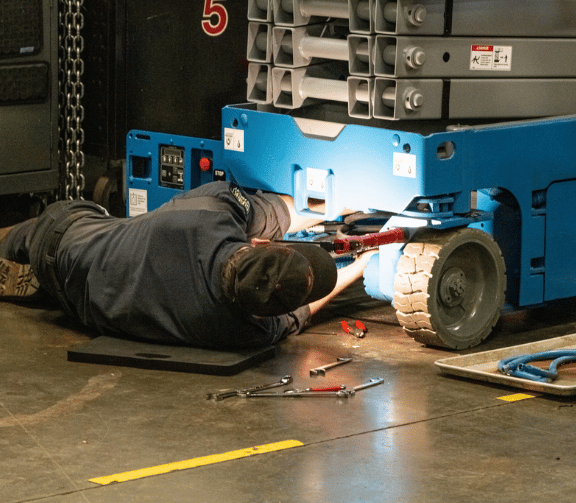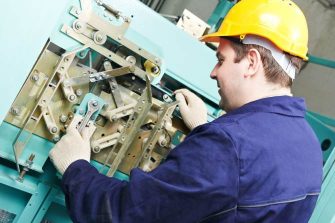Advanced Lift Engineer Course: Plan For Jobs with Leading Lift Repair Companies Near Me
Advanced Lift Engineer Course: Plan For Jobs with Leading Lift Repair Companies Near Me
Blog Article
Comprehensive Guide to Lift Systems and Their Upkeep
Navigating the intricate globe of elevator systems and their upkeep is a job that demands precision and expertise. From the numerous sorts of lift systems in operation to the precise adherence to safety laws, the upkeep of these upright transportation tools is a diverse endeavor. As buildings skyrocket higher and modern technology advancements, the need for an extensive understanding of lift systems comes to be progressively essential. Join us as we decipher the intricacies of lift upkeep, exploring common problems, best methods, and advanced modern technologies that shape the modern-day landscape of vertical transport.
Kinds Of Elevator Solutions
The most common types consist of hydraulic elevators, traction elevators, machine-room-less elevators, and vacuum elevators. Hydraulic lifts are ideal for low-rise buildings and make use of a hydraulic piston to relocate the elevator cars and truck. Machine-room-less lifts are a space-saving alternative as they do not require a different machine room for the lift equipment.
Each kind of lift system has its own benefits and disadvantages, making it vital for building owners and developers to carefully consider their specific requirements prior to choosing one of the most appropriate alternative. Factors such as building elevation, space availability, power effectiveness, and budget plan constraints all play a significant function in figuring out the best elevator system for a specific building.
Usual Upkeep Issues
Routine maintenance of lift systems is important to ensure smooth procedure and lengthen their life-span. Despite normal upkeep, elevator systems can still run into typical upkeep concerns that require to be promptly addressed to protect against disturbances in solution. One of one of the most constant issues is door breakdowns. Lift doors may obtain misaligned, causing issues with opening and closing effectively. This can trigger hold-ups and safety risks, needing prompt attention from maintenance technicians. An additional typical problem is related to the elevator's leveling precision. Guests might experience tripping hazards and pain if the elevator doesn't align properly with the floors. Furthermore, issues with the control system, such as sensing unit problems or electric issues, can cause the lift to malfunction or quit functioning completely. Normal assessments and proactive maintenance can aid recognize and fix these usual maintenance problems before they intensify and influence the total performance of the lift system.
Security Rules and Conformity
Sticking to stringent safety and security guidelines and guaranteeing compliance with market requirements are critical for maintaining the functional stability of elevator systems. Lifts are subject to a thorough collection of safety guidelines to guard guests, upkeep employees, and the basic public. Regulatory bodies such as the Occupational Safety And Security and Wellness Administration (OSHA) in the USA and the European Lift Association (ELA) in Europe develop standards that cover numerous aspects of lift style, installment, maintenance, and procedure.
Compliance with these policies is not just a legal requirement however also an ethical obligation for building proprietors and lift maintenance firms. Regular evaluations, upkeep checks, and adherence to safety methods described in the guidelines are vital to make sure the secure and effective procedure of elevator systems.
Finest Practices for Upkeep

One more essential best practice is to quickly resolve any kind of documented problems or uncommon noises to stop further damages. Implementing a proactive approach to maintenance can save money and time over time by check my blog preventing expensive repair services or substitutes. Structure owners need to likewise think about purchasing modernization upgrades to improve the performance and safety of their elevator systems. By complying with these ideal practices, elevator systems can operate efficiently and securely, offering dependable upright transport for occupants.

Advanced Technologies for Performance
Applying innovative modern technologies in elevator systems can considerably improve functional efficiency and guest experience. lift maintenance london. Among the crucial innovations in elevator technology is the intro of destination control systems. These systems permit travelers to input their wanted floor before entering the elevator, which after that directs them to the most reliable cars and truck. By lessening unnecessary quits and optimizing traveling courses, destination control systems lower wait times and congestion in high-traffic structures.
Additionally, the integration of wise sensing units and predictive upkeep capacities has actually changed lift maintenance. These sensors can identify prospective concerns before they escalate, enabling positive upkeep treatments and minimizing downtime. Furthermore, using energy-efficient parts and regenerative drives helps in reducing power usage and operating expense in elevator systems.
Moreover, the implementation of cloud-based surveillance and remote diagnostics enables real-time tracking of lift performance and instant troubleshooting of any type of breakdowns. This aggressive strategy not just improves system dependability yet additionally improves the total user experience by making sure smooth and nonstop elevator operations.
Conclusion
Finally, comprehending the various kinds of lift systems, common upkeep problems, security guidelines, finest upkeep practices, and navigate to this website advanced innovations for effectiveness is critical for ensuring the smooth procedure of lifts. By adhering to safety policies and executing finest methods for upkeep, building owners can lengthen the life-span of their lift systems and make certain the safety and security of guests. It is very important to stay updated on the latest developments in lift technology to boost efficiency and reliability.
The most typical types consist of hydraulic elevators, grip lifts, machine-room-less lifts, and vacuum elevators. Hydraulic lifts are excellent for low-rise structures and make use of a hydraulic piston to move the elevator car. Machine-room-less lifts are a space-saving alternative as they do not need a separate maker area for the lift equipment. Routine assessments and proactive upkeep can assist determine and deal with these usual maintenance issues prior to they escalate and impact the overall performance of the elevator system.

Report this page